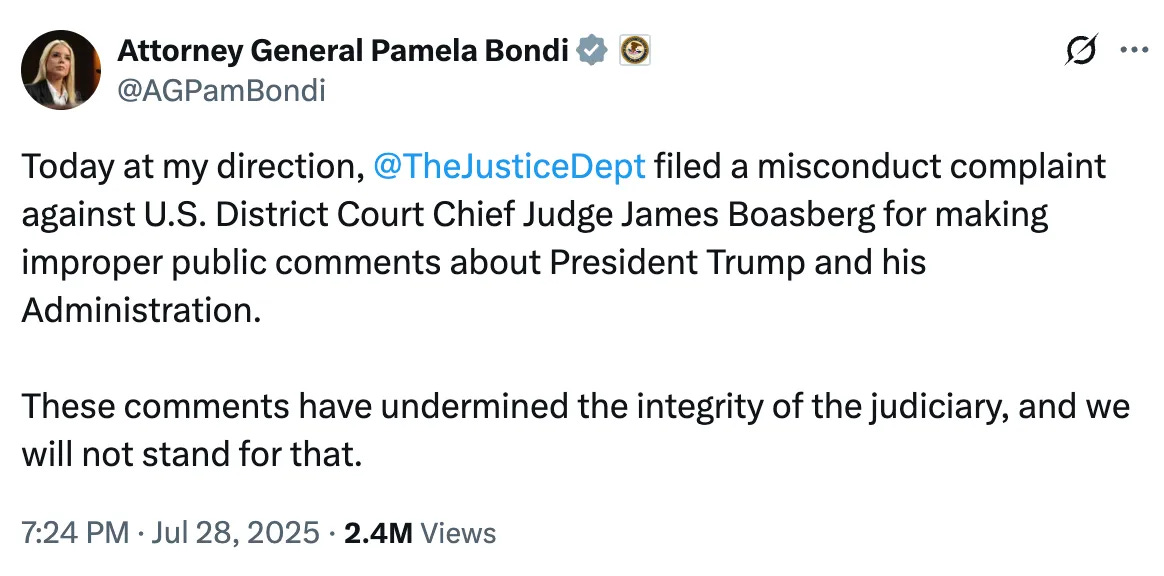October 6, 2025
Judicial Complaint Against Chief Judge Boasberg Raises Questions of Integrity and Performative Justice

In a startling revelation, the Justice Department has been accused of lodging a baseless judicial misconduct complaint against Chief Judge James Boasberg of the US District Court for the District of Columbia. The complaint, which was intended for Chief Judge Sri Srinivasan of the DC Circuit, shockingly lacked critical evidence—a missing attachment that was cited but never included.
The complaint accused Judge Boasberg of attempting to intimidate Chief Justice John Roberts and making improper public comments about pending cases, specifically relating to President Donald J. Trump. These allegations, which were meant to question the integrity and impartiality of Judge Boasberg, appear to lack substantiation as the crucial Attachment A, referenced in the document, was never provided to Judge Srinivasan nor made available to the judiciary or the press.
This missing document has sparked a FOIA lawsuit by Law and Chaos, aiming to shed light on the elusive Attachment A. However, their efforts have been stifled by the DOJ’s Office of Information Policy, which denied expedited processing of the FOIA request and relegated it to a complex track—potentially delaying the release of information for years.
The initial accusation against Judge Boasberg was first publicized by Margot Cleveland of The Federalist, who expressed outrage over the alleged discussions among D.C. District Court judges regarding how Trump might react to an adverse ruling. Cleveland’s reporting, which may form the basis of the DOJ’s Attachment A, has been criticized for its lack of neutrality and adherence to facts.
In a countermove, Law and Chaos has filed for partial summary judgment in their FOIA lawsuit, arguing that the public’s right to know is being compromised by the DOJ’s withholding of information. Their attorney, Kel McClanahan of National Security Counselors, emphasized that the credibility of the government is at stake, whether it concerns the judiciary or the executive branch.
The DOJ’s handling of this complaint has been perceived as a mere publicity stunt, aimed at discrediting a judge unfavorable to the Trump administration rather than protecting judicial integrity. This entire episode illustrates the complexities and potential misuses of judicial complaints as tools for political agendas, reminding us that such actions can significantly undermine public trust in governmental institutions.
The call for transparency remains loud and clear: it’s time for the DOJ to release the information and clarify the air around this judicial controversy. As the legal battles continue, the public and the media remain vigilant, awaiting the full disclosure of facts that will illuminate the true motives behind this judicial complaint.